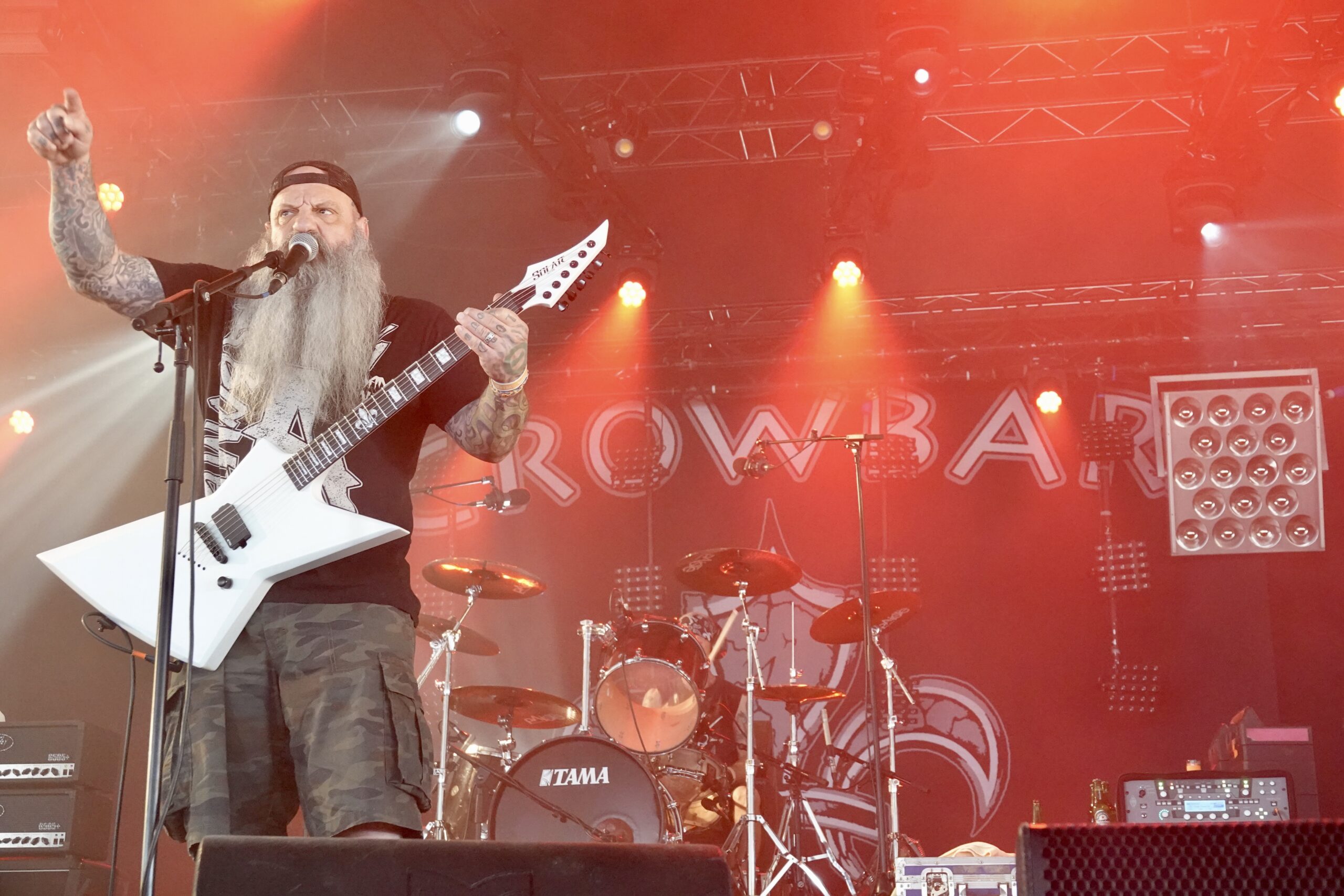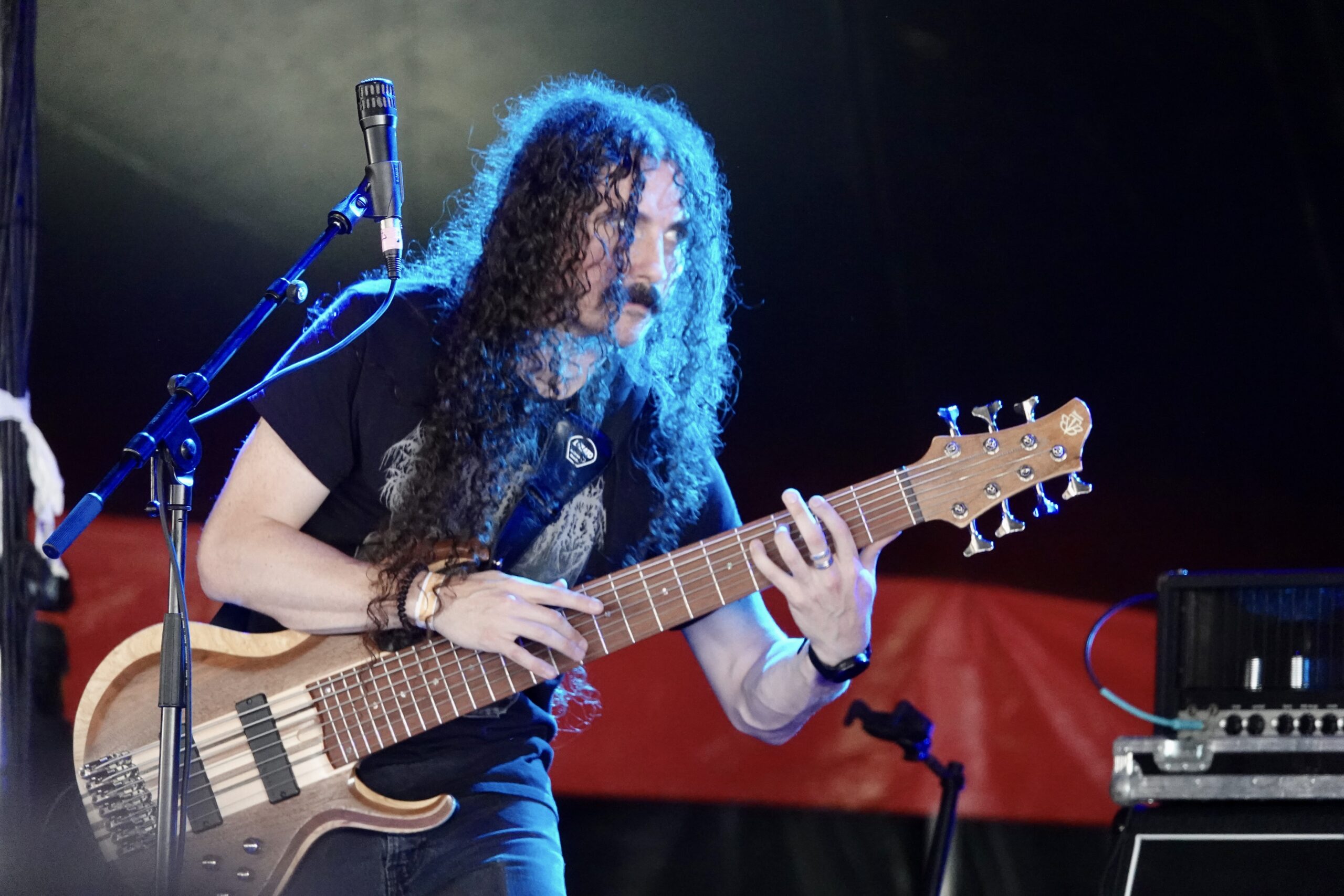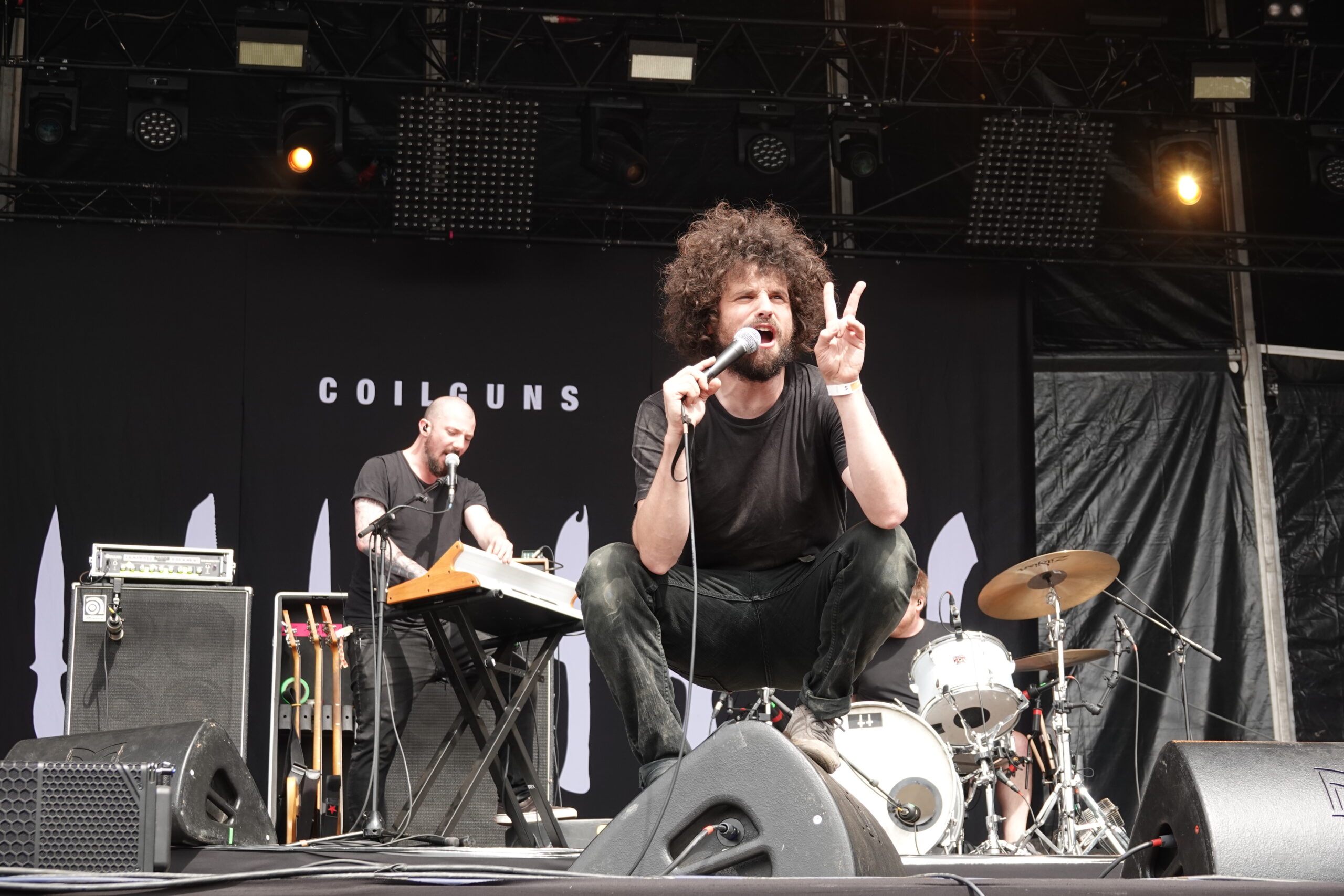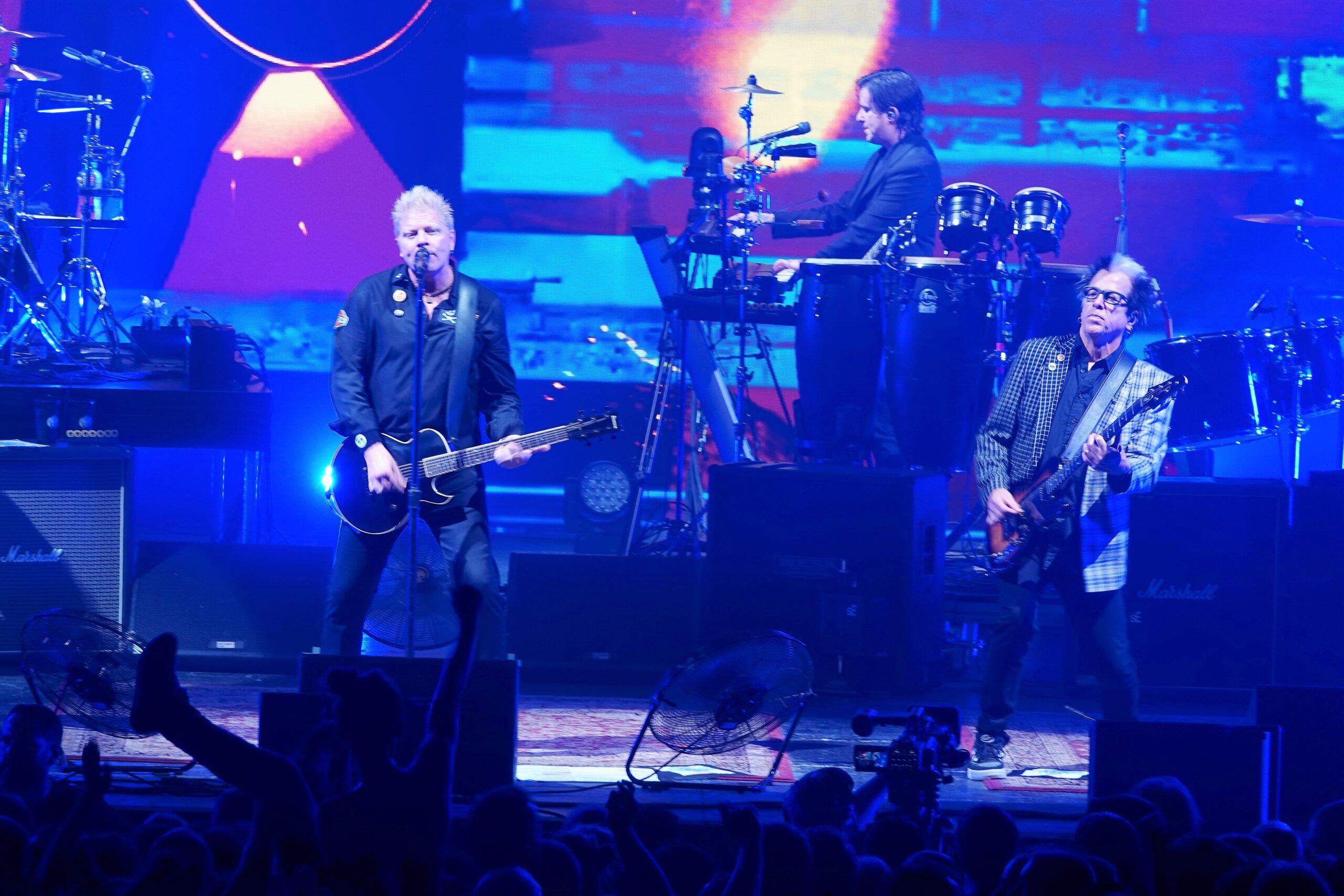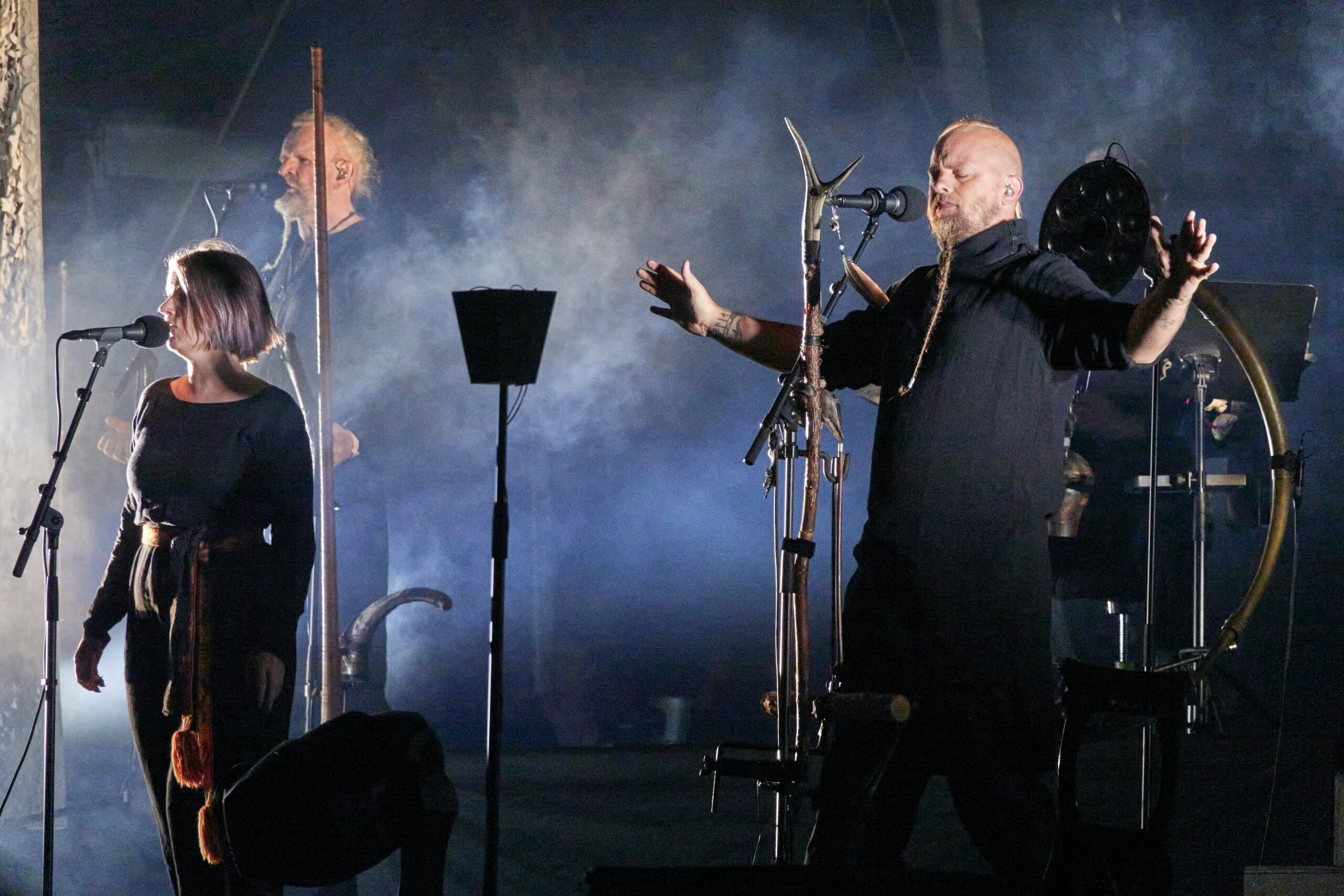Masamune & Muramasa, the legend of the great Kajiya (sword smiths)
What could be better for a split album bringing together two metal bands than the mention of two legendary sword smiths. Unlike the previous chapter, Turned To Stone Chapter I which brought together Mr Bison (Italy) and Spacetrucker (USA, St Louis) (also highly recommendable opus!), Sergeant Thunderhoof and Howling Giant have come to an agreement with the label to address a common theme. The battle of the chiefs initiated by Ripple Music on this chapter II therefore takes place on the historical as well as musical level, in all plain friendship, of course. The two groups have chosen to compete over time, since on each side of the record they will play respectively an epic 19mn track for Howling Giant and 21mn for Sergeant Thunderhoof. The result is an astonishing homogeneity, each succeeding at the same time to merge its style, and to show its own identity, while building two titles which match perfectly! A rare listening pleasure.
An allegory of the fight between good and evil:
The opposition between two similar figures that ultimately everything opposes is very often the case to symbolize the fight between good and evil. Of course, neither of the two groups is one or the other. On the other hand, the legend which is at the origin of the choice of this common theme is a Japanese variation — not bad — of this multi-secular and universal conflict.
To my left, Howling Giant and Masamune, an epic (za) zen
Celebrated for the purity of its steel and for having created the nie (arrangement of crystals in the alloy of metals which gives a particular shine to the blade), Masamune Okazaki, also known under the name of Goro Nyudo Masamune, was in the trade of blacksmith (swordsmith) in the 13th / 14th century in the province of Sagami (Center / South-South-East of Japan, today Kanagawa). One of its blades would have been used by Myamoto Musachi, legendary fencer from the land of the rising sun (Read The Stone and the Saber and The Perfect Light). Legend, or history, claims that the blacksmith as he grew older turned more and more to Zen meditation, which would explain the “behavior” of his blade in the myth associated with Muramasa. Like the blades of this craftsman, the music of Howling Giant is rare and precious. The group from Nashville officiates in a psyche metal where the organ pads support sometimes aerial guitars, or come to support riffs with a well-proven edge.
For this first monument of metallurgy in the land of the Rising Sun, tackled by Howling Giant, the musicians choose to unroll a piece worthy of the greatest moments of progressive rock, mixing stoner and space-rock, with variations of themes and intensity, rises and bridges, while composing variations on the same theme that are particularly successful. If the main riff evokes the regularity of the hammer sounds of the craftsman and comes again after two verses and two choruses, it also serves as the main theme which will be developed and will vary over the whole number and will be mixed with the repeat of the arpeggios from the beginning, which will be used as harmonic base to develop the number. The use of the bass tom to bring a sound and a rhythm reminiscent of the wadaiko (large Japanese drum), allows a stylistic shift that will guide the number towards a lyrical paroxysm where bass, guitar and organ intermingle, until the intense final loaded with emotion.
Embers purify The imperfections River running dry Expose reflections of iron
To my right, Sergeant Thunderhoof and Muramasa, surges of violence
Muramasa may not be the only blacksmith to go by this name. Indeed, it was common in the Japan of the XV / XVI, time where he lived, that several generations get the same name. Still, it seems that the second Muramasa is the most famous of them. He is known as Sengo. Where the latter’s story is closely intertwined with that of Masamune, it is when repeatedly wounded by the blacksmith’s blades, the Shogun Tokugawa Ieyasu (1543-1616) prohibits the latter to whom we attribute a mystical evil power due to the angry character of his creator. The craftsman would then have decided to sign his arms « Sengo ». But, there might have been some trafficking of his works, shortened into long daggers (we talk about suriage), and decked out with Masamune’s signature … So much for the official story.
But it didn’t take more than that for the legend of a confrontation between the blades of the two craftsmen on the banks of a river. Where it is interesting and concerns the musical approach for which the groups respectively opted, is the attitude of the sabers themselves in the water course: planted in the river, that of Muramasa would have cut everything. which passed on its thread — leaves, fish, air — while Masamune’s would have kept anything that was getting close. The moral being that one was inhabited by the violent spirit of its creator (Muramasa), and the other by the Zen peace of Buddhism of its blacksmith.
The title of Sergeant Thunderhoof is indeed a counterpoint / counterbalance to that of Howling Giant. Muramasa is a dense, compact piece, much more violent than the aerial Masamune. Two “metal” schools clash here. Musicians from Somerset seem to have forged their song in the toughest metal! Like “every good boy deserves fuzz” —thanks Mudhoney — it would be a shame if ST did not! Alternating calm passages full of arpeggios and thick, buzzing riffs with an unstoppable groove, the song flows like the flow of a river between calm and rapids, all in continuity and harmony. ST is used to songs that extend, rarely going below 5mn; their tracks tend to easily reach 7 / 8mins, like Goat Mushroom on Ride The Hoof (2015). But this piece of bravery that is Muramasa is a very successful premiere. The 21mn of the number flows like a piece that would be half the duration, proof of the balance of structure and the mastery of writing achieved by ST!
However, it would be dishonest to reduce Muramasa to a wall of guitars punctuated by drops in intensity. Dan Flitcroft‘s fairly high voice, dressed in reverbs, which sometimes goes into lyrical flights, or sometimes slips into a more aggressive register, gives a good dose of air to the whole (on some passages, it reminds us of YOB!). The singer deploys his melodies on a richer register than his colleague from HG, without Tom Polzine having to be ashamed of his performance. But this is certainly what best characterizes the work of the group which focuses more on atmospheres emphasizing the vocals than their Tenessee fellows more inclined to more complex a construction of the number.
Bring me the earth, the rivers and the moon Heaven and hell, I’ll strike them all in two
A reunion of two fine swords
This is a real success on the part of the label which allows once again, beyond the quality of the two tracks, to introduce fans of each formation to the music of the other. So much so that you might believe the album was written by one band — Howling Thunderhoof? — and honestly claim that the two stoner / psyche blacksmiths were starting on equal terms. The cinematic aspect of both tracks only reinforces the evocative power of their music and, indeed, beautifully illustrates this epic. The E.P., which seems to look more like an album because of its length, is one of the best and most interesting splits that I have heard!
If I have been closely following Sergeant Thunderhoof since their first and excellent EP Zigurat (2014) without having had the chance to see them live, Howling Giant was just a name heard in a conversation or read somewhere in an article. And it would have been a shame to miss this group as their music is a overload of pleasure, a provider of good vibes with varied atmospheres. A little hope: the two groups had planned to tour together in 2020, let’s hope they postpone it to 2021 … and go to France.
Howling Giant (Nashville, Tenesse, since 2014)
Tom Polzine – Guitar and Vocals
Zach Wheeler – Drums and Vocals
Sebastian Baltes – Bass and Vocals
Guest Appearances :
Drew David Harakal II – Organ/Piano/Synths
Howling Giant (2015), Black Hole Space Wizard part I (2016), Part II (2017), The Space Between Worlds (2019)
https://howlinggiant.bandcamp.com/
https://www.facebook.com/howlinggiant
Sergeant Thunderhoof (Bath, Somerset, since 2013)
Dan Flitcroft – Vocals
Mark Sayer – Guitar
Jim Camp – Bass
Darren Ashman – Drums
Zigurat (2014), Ride of the Hoof (2015), Live on Earth (2016), Terra Solus (2018), Delicate Sound Of Thunderhoof (2020)
https://sergeantthunderhoof.bandcamp.com/
https://www.facebook.com/sergeantthunderhoof
Label :
https://ripplemusic.bandcamp.com/album/turned-to-stone-chapter-2-masamune-muramasa
